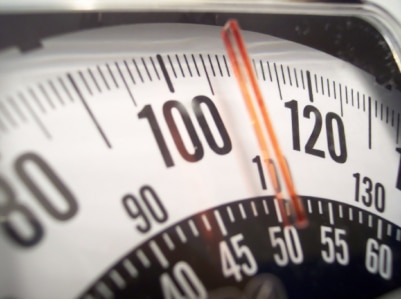 BMI stands for body mass index and is a way to determine if you’re weight is appropriate for your height. A high BMI is associated with an increased risk for disease. It is the most often used tool in medicine to evaluate for overweight and obesity. It is useful for studying populations of people as a predictor of future disease risk but has potential problems and pitfalls when applied to any given individual. Far from being an ideal tool, BMI is simple to obtain and the main reason it is used most often.
BMI stands for body mass index and is a way to determine if you’re weight is appropriate for your height. A high BMI is associated with an increased risk for disease. It is the most often used tool in medicine to evaluate for overweight and obesity. It is useful for studying populations of people as a predictor of future disease risk but has potential problems and pitfalls when applied to any given individual. Far from being an ideal tool, BMI is simple to obtain and the main reason it is used most often.
How to Calculate BMI
BMI is simply calculated by taking your weight (either in pounds or kilograms) and dividing it by your height squared (in inches or meters). When using inches and pounds the formula requires a conversion factor of 704.5. For instance, if you weigh 165 pounds and are 68 inches tall your BMI is 165 divided by (68 times 68) times a conversion factor of 704.5. When you do the calculation you get 25.14. There is no conversion factor if using the metric system.
If you are not good at math some tables can be used to determine your BMI.
The video below helps you understand BMI.
How to Interpret BMI
- A BMI between 18.5 and 24.9 is considered normal.
- A BMI below 18.8 is considered underweight.
- A BMI of 25 to 29.9 is considered overweight
- A BMI of 30 to 34.9 is considered obese
- A BMI of 35 to 39.9 is considered severe obesity
- A BMI greater than 40 is considered morbid obesity.
To be considered a candidate for bariatric or weight loss surgery one must have a BMI greater than 40 without other disease, or a BMI between 35 and 39.9 in association with other diseases like type 2 diabetes, high blood pressure, heart disease, and sleep apnea.
High BMI but Lots of Muscle
If you are muscular there is a good chance you may have a BMI over 30 or at least over 25. Does this mean you are not healthy? No, you can be very healthy in the presence of a high body mass index. This is a shortcoming of the BMI. It does not differentiate between fat and muscle. Having a high body mass index is unhealthy when the extra weight is in the form of fat as the real health concern is the portion of fat relative to body weight. Muscular athletes typically have high BMIs because of the addition of muscle mass but are not felt to be at higher risk of disease.
At the end of the day, you want to know how much fat you have and how much muscle you have. This is called your body composition.
Body Composition Methods
Body composition measurements are the best way to determine actual fatness, but require special testing. You may be familiar with some of the ways to determine body fat. Each of these methods has its place. They differ in cost, ease of performing, and accuracy. These include:
- Underwater (hydrostatic) weighing is based on Archimedes’ principle. It is felt to be the most valid technique but requires a submersion tank.
- DEXA scan which is performed on the same machine that determines bone density. It is accurate and easy to perform in a clinical setting.
- Bioelectrical impedance devices including some bathroom scales. Fairly accurate but influenced by your state of hydration.
- Skinfold thickness. About half the fat lies just under the skin. Highly operator-dependent.
- NMR or nuclear magnetic resonance. Expensive machine and not practical in the clinical setting.
- Body Pod. This kind of machine measures how much air your body displaces.
All of these provide more information than body mass index, but body mass index provides more information than just body weight.
Measuring body composition is useful when performed both before and after starting an exercise and nutrition program to monitor the success of such programs.
Another method to determine health risks related to body size is to measure waist size. This is done by placing a tape measure at the top of the iliac crest or top of the hip bone wrapping it around the abdomen parallel to the floor and measuring after exhaling. A waist size over 40 inches in men and 35 inches in women is considered to represent an increased health risk.
See related articles.
What’s The Best Way To Measure Body Fat?
How To Build Muscle Regardless Of Your Body Frame
Updated March 19, 2022.
